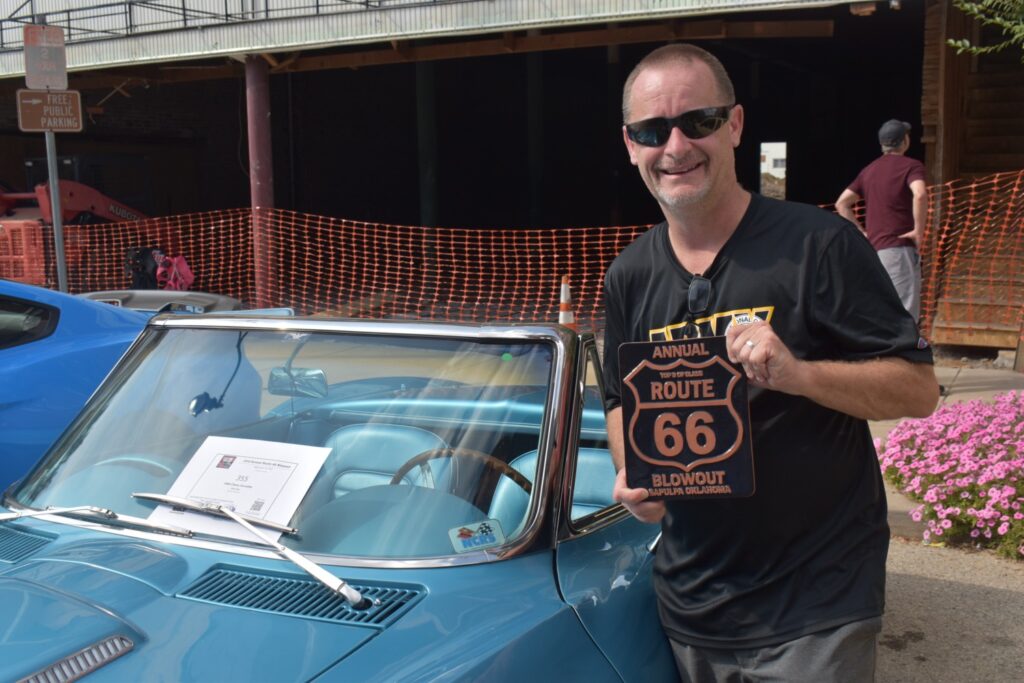By Clay Fees
While the local car show season generally runs from March through November, the cooler weather of fall brings with it some of the area’s biggest car shows as classic car owners that avoid the heat of high summer re-emerges with their classic rides. In fact, Sapulpa just closed the book on its largest Route 66 Blowout car show field, as nearly 400 cars lined the streets of downtown Sapulpa. The upcoming weeks will see other large local fall festivals with large car shows, such as the upcoming Mounds Car Show and the Wewoka Sorghum Day car show.
As people wandered the seemingly endless line of classic cars, many may wonder what it takes to prep a show car for the field. In some ways, there is more work than one might expect and, in others, there is less.

The starting point for any car show prep is, naturally, the car itself. There is an old saying about some things that just can’t be polished and that is true of cars as well. If the car does not have a decent paint job, relatively clean engine compartment, and an interior that isn’t some sort of Disneyland for rodents, the car will never be a true show car, regardless of the elbow grease spent on it.
Assuming the car has these things, it is generally a matter of simply cleaning them up. Most cars one sees at local car events are driven regularly, at least to local shows and cruise nights, if not more. Cars were made to be driven and only “trailer queens” – cars that are taken to events on a trailer and rarely driven – are the cars that do not need to be freed of road grime.
However, even show cars that are driven are generally kept in a covered area protected from the elements. Some car owners go the extra step of snuggling their rides under a car cover and some don’t, fearing the cover and the inevitable dust will combine, over time, to dull the paint.
Whether covered or not, the first step in preparing a car for a show is simply to check the battery and fluids such as oil and coolant and to remove the car from its hibernation. The car needs to be started and allowed to warm up. In fact, the car should be started regularly regardless of whether it is destined for a show, for no other reason than to allow fluids to flow and to keep seals hydrated to prevent leaking.
After the car is out and running smoothly, the next step is a good washing. Some owners start with high pressure water to blow off the dust before moving to using soap to wash grime from the finish and brightwork such as bumpers and emblems. The car is then quickly dried with a high quality, natural chamois, and preferably in the cool morning and out of the sun, so the car can be chamoised before the water droplets dry, causing hard-to-remove water spots. Always start drying the car with the large, flat vertical surfaces such as hood, top and decklid, as these will dry the fastest.
When the car is good and clean – and only when it is absolutely clean – some owners prefer to add a coat of wax. A car must be free of dirt and grime before waxing, as the process of applying and removing wax will grind dirt into the paint and cause it to dull. The areas around and under pot metal emblems found on old cars are notoriously hard from which to remove wax so special care or the removal of the emblem itself may be necessary.
A final step in the cleaning of the exterior would be a good application of chrome polish or Brasso to the bumpers and other brightwork to remove bugs and grime and to thoroughly clean the chrome. Steel wool can also be used for bugs that just won’t let go of the chrome. Tires can be scrubbed and cleaned with 409 or similar products and a good stiff brush.
Once the exterior of the car is clean and, if necessary, waxed, the interior must be vacuumed and wiped clean of dust. Vinyl areas of the interior can be wiped down with a good protectant such as ArmorAll, with care not to get the product on surfaces such as pedals or steering wheel, as these products can be slippery.
Once these steps are complete, the car can then be driven to the show, where the final steps of show prep take place. These final steps include applying ArmorAll or other tire shine to the tires, to give them a slick, new appearance. Finally, a car can be sprayed with a show prep spray that prevents dust and adds a final shine to the car’s finish.
Prepping a car for a show can be a lot of work, but it is always a labor of love. Owners of classic cars enjoy the work, and in the process become intimately familiar with every inch of their cars, sometimes alerting them to approaching problems with the finish or chrome, as well as helping to identify new dings or damage to be addressed.
The next time you peruse a car show, keep in mind all the hard work that goes into the preparation of these great vehicles for the show, not to mention the incredible time and expense it takes to restore a classic car. The end result of this hard work is an immaculately clean and well-presented classic vehicle for the public’s enjoyment, and one piece of a show field that makes all the small-town festivals across this great state the successes that they always are.








